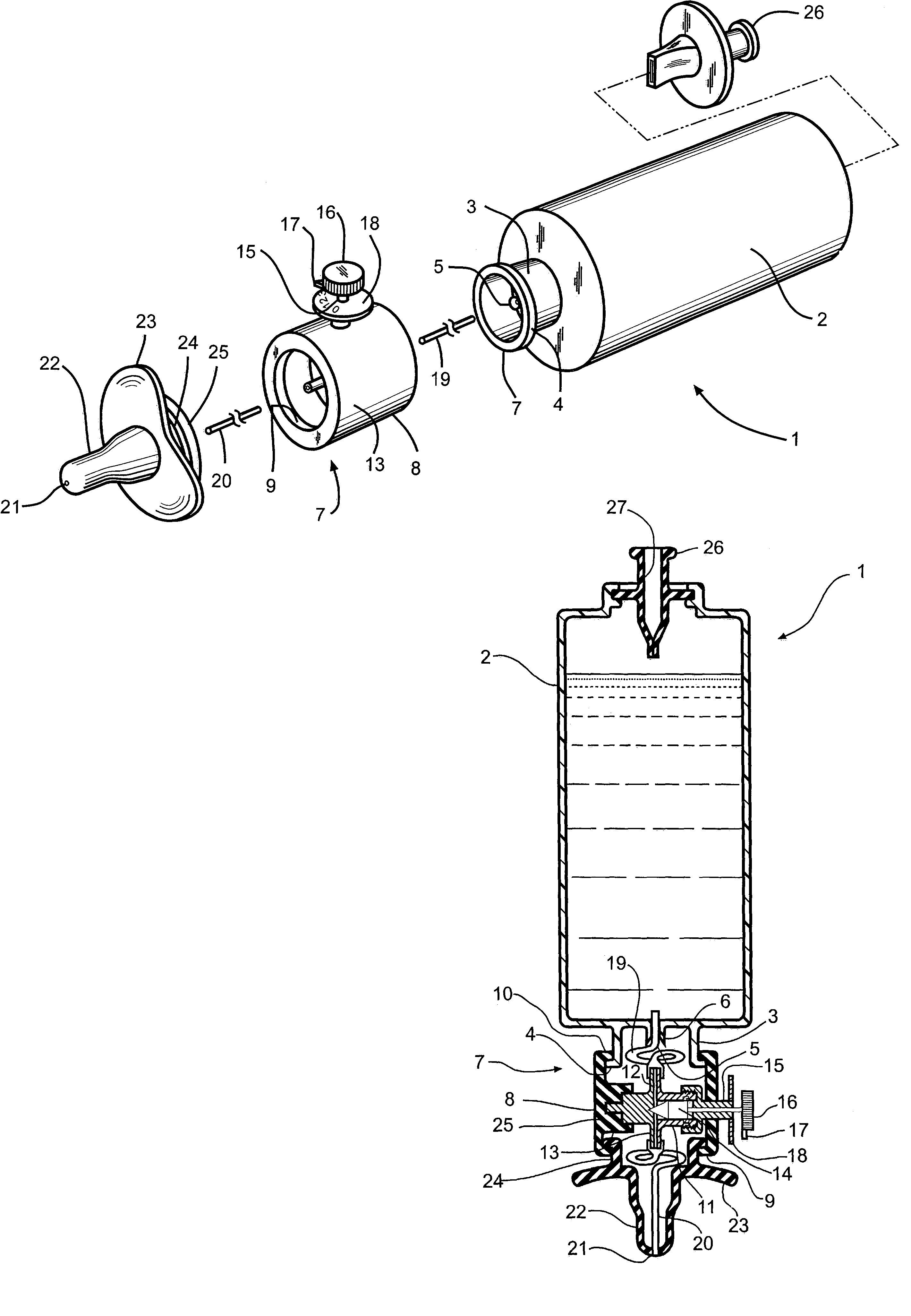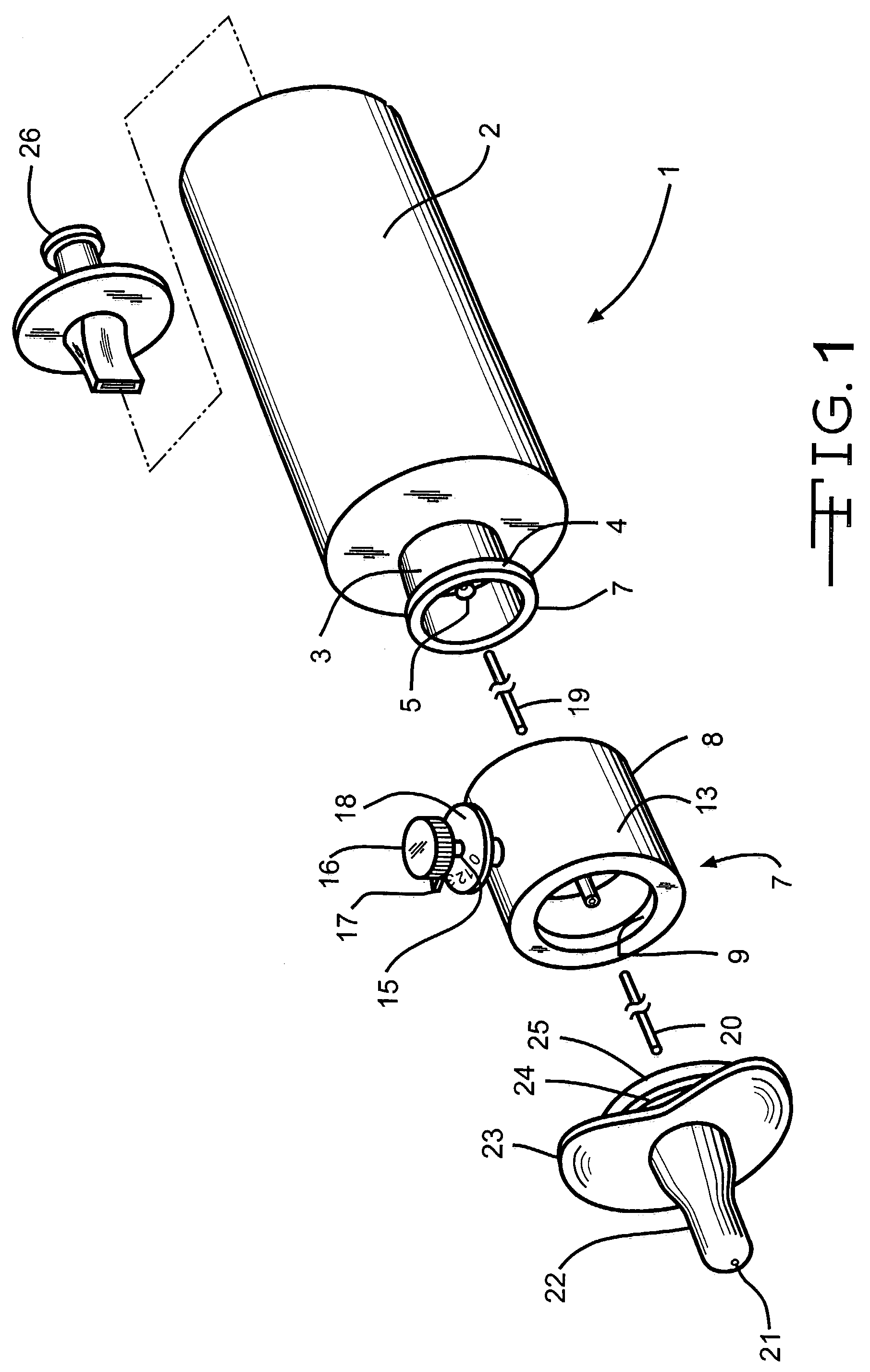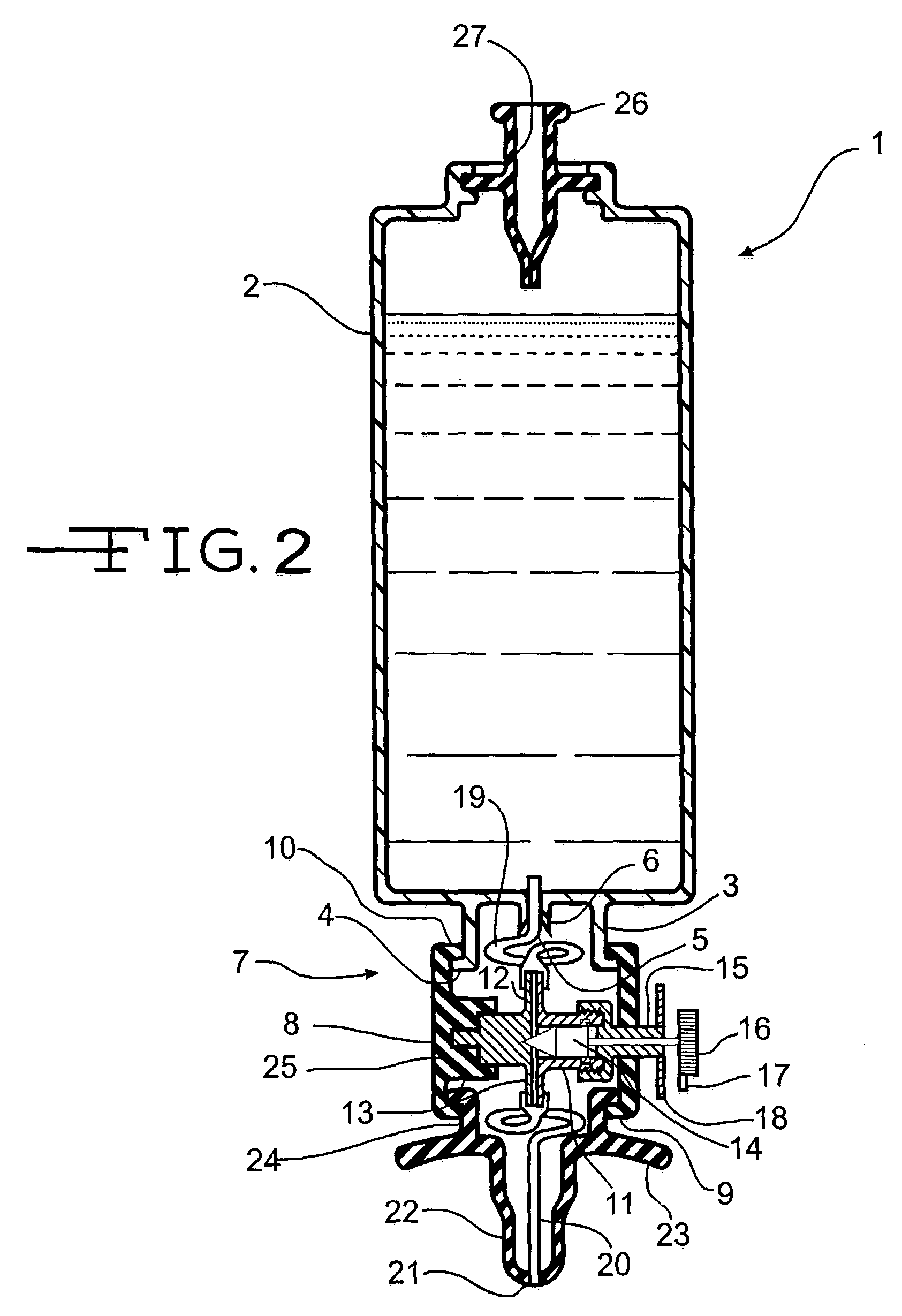Feeding device and feeding method for infants
a technology for infants and feeding devices, which is applied in the field of feeding devices for infants and a feeding method for weaning infants, can solve the problems of infant distress, infants are easily injured, and the transition from tube feeding to oral nutritive feeding is often quite traumatizing, so as to increase the risk of aspiration for infants and be convenient to us
- Summary
- Abstract
- Description
- Claims
- Application Information
AI Technical Summary
Benefits of technology
Problems solved by technology
Method used
Image
Examples
Embodiment Construction
[0021]The present invention is generally directed to a feeding device for infants and a method for weaning infants from non-oral tube feeding to oral feeding from a conventional bottle. More particularly, the feeding device and the method are used to gradually and safely promote the transition from non-nutritive sucking on a pacifier to nutritive sucking, i.e., a repetitive cycle of sucking, swallowing and breathing at a level or rate sufficient for an infant to intake at least about two ounces of nutritive fluid in a twenty minute session. The invention is particularly useful for premature infants that have not learned to coordinate the sucking, swallowing and breathing cycle sufficiently to enable them to take nutrition orally. The features of the invention will be more readily understood by referring to the attached drawing figures in combination with the following description.
[0022]When beginning to use the feeding device of the invention, the infant first establishes a function...
PUM
 Login to View More
Login to View More Abstract
Description
Claims
Application Information
 Login to View More
Login to View More - R&D
- Intellectual Property
- Life Sciences
- Materials
- Tech Scout
- Unparalleled Data Quality
- Higher Quality Content
- 60% Fewer Hallucinations
Browse by: Latest US Patents, China's latest patents, Technical Efficacy Thesaurus, Application Domain, Technology Topic, Popular Technical Reports.
© 2025 PatSnap. All rights reserved.Legal|Privacy policy|Modern Slavery Act Transparency Statement|Sitemap|About US| Contact US: help@patsnap.com



